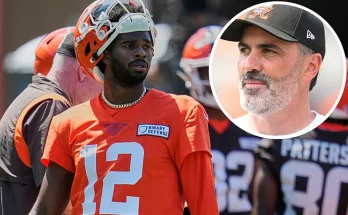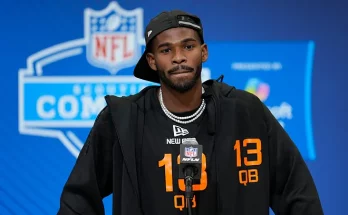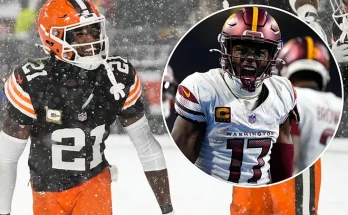A New Playbook for Fairness: NCAA Division I Board of Directors Unveils Groundbreaking Proposal to Allow Direct Financial Payments to College Athletes
In a monumental shift that could redefine the future of college sports, the NCAA Division I Board of Directors has introduced a proposal that would permit direct financial payments from schools to their athletes. Touted as “a new playbook for fairness,” this bold policy change reflects the evolving landscape of college athletics, where the lines between amateurism and professionalism continue to blur.
This landmark proposal has sent shockwaves across the collegiate sports world, from Power Five conferences to mid-major programs, and has ignited debates surrounding equity, recruiting dynamics, and the very identity of college athletics in the 21st century.
The Proposal at a Glance
The NCAA’s new proposal would allow Division I schools to directly compensate their student-athletes for their athletic participation — a historic reversal from decades of maintaining a strict amateur model. While student-athletes can already earn money through Name, Image, and Likeness (NIL) opportunities since 2021, this new proposal goes further: it would authorize universities to pay athletes directly, creating a formalized and regulated compensation structure within athletic departments.
Some of the key elements of the proposal include:
- Annual payments directly from the school to student-athletes, potentially exceeding current scholarship values.
- Regulatory oversight to ensure payments are equitable across programs and do not create exploitable loopholes.
- Opt-in participation for schools, meaning institutions could choose whether to engage in this new model.
- Clear limitations and guidelines to maintain competitive balance and avoid a full professionalization of college athletics.
The NCAA emphasized that this proposal is not intended to create salaried employees out of student-athletes but to provide a more just share of the revenue athletes help generate — particularly in high-revenue sports like football and men’s and women’s basketball.
The Evolution of College Athlete Compensation
To understand the significance of this proposal, it’s essential to look back at the evolution of compensation in college sports.
For decades, the NCAA clung to a definition of amateurism that precluded athletes from receiving any form of payment beyond scholarships and cost-of-attendance stipends. But growing public pressure, high-profile lawsuits, and a rapidly commercializing sports landscape gradually chipped away at that model.
- 2014 – O’Bannon v. NCAA: A federal judge ruled that the NCAA’s ban on athletes being paid for the use of their likeness violated antitrust law.
- 2021 – NCAA v. Alston: The Supreme Court unanimously ruled that the NCAA could not limit education-related benefits to athletes, signaling a seismic shift.
- July 2021 – NIL Era Begins: Athletes could start profiting from their own name, image, and likeness — setting off a flurry of deals, collectives, and endorsement contracts.
Now, just a few years into the NIL era, the NCAA’s latest move would represent the boldest transformation yet.
A Tectonic Shift in the Business of College Sports
While NIL deals have provided many athletes with new revenue streams, those earnings have largely come from third parties — boosters, businesses, and collectives. What the new proposal introduces is the concept of direct compensation from the institutions themselves, creating a more transparent and potentially equitable system.
In many ways, this was inevitable. Division I college football and men’s basketball, in particular, generate billions of dollars annually through media rights, ticket sales, sponsorships, and merchandise. The athletes — the ones whose labor and talent fuel these revenue streams — have long been left out of the financial windfall.
Under the proposed framework, schools would be allowed to allocate a portion of athletic department revenue directly to athletes. This would formalize compensation in a way that is less reliant on NIL markets and more reflective of athletes’ central role in the product.
How It Could Work: Tiered Payments and Guardrails
Though the proposal is still in its infancy, NCAA sources indicate that a tiered compensation model is under consideration. For instance:
- Revenue-generating sports like football and men’s basketball might see higher baseline payments for athletes.
- Olympic and non-revenue sports could receive stipends proportionate to their program funding and performance.
- Athletes in Title IX protected sports would also be eligible for payments, ensuring gender equity remains a foundational principle.
To avoid a bidding war among schools or unchecked capitalism that could erode parity, the NCAA is exploring guardrails such as:
- Annual caps on total athlete compensation.
- Independent audits and reporting requirements.
- Oversight committees to monitor fairness across programs.
Some experts have suggested a figure of $30,000–$50,000 annually per athlete as a realistic benchmark for many Power Five programs, though that number would vary depending on sport, conference, and institutional resources.
Supporters Applaud a Long-Overdue Change
Athletes, advocacy groups, and some university leaders have hailed the proposal as a long-overdue correction to an exploitative system.
“This is a win for fairness, plain and simple,” said Ramogi Huma, executive director of the National College Players Association. “Athletes have been generating billions for universities, coaches, and broadcasters for decades — it’s only right that they receive a fair share.”
Coaches, especially in football and basketball, have also voiced cautious support, noting that a clearer, more regulated compensation model could reduce chaos in the recruiting world. Many coaches have struggled to manage NIL-induced roster instability and constant transfer portal churn.
“I think bringing some of this back under the university umbrella could help all of us,” said one SEC football coach. “It levels the playing field a little.”
Detractors Worry About Consequences and Unintended Effects
Not everyone is on board.
Some athletic directors and university presidents worry about the financial sustainability of such payments. With only a handful of Division I programs running a profit, there are fears that smaller or less lucrative sports could suffer budget cuts as money is reallocated toward direct athlete compensation.
“There’s a real risk here that schools will have to make painful choices,” said one Pac-12 administrator. “If the money goes to football and men’s basketball players, where does that leave softball, swimming, or gymnastics?”
Others worry about the legal implications. Would student-athletes become employees under the law? Would schools be subject to labor disputes, unionization efforts, or collective bargaining? The NCAA is expected to lobby Congress for federal legislation that would clarify the employment status of athletes under this new model.
Title IX Considerations
Gender equity remains one of the most pressing issues surrounding the proposal. Under Title IX, schools must provide equal treatment and benefits to male and female athletes. That principle will be tested in a system where the lion’s share of revenue is generated by men’s football and basketball.
NCAA President Charlie Baker emphasized that Title IX compliance will be a core component of the plan.
“We are committed to ensuring that this system does not create new disparities,” Baker said. “Fairness means fairness for all athletes — regardless of gender, sport, or revenue potential.”
Still, implementation will be tricky. How do you structure a compensation model that reflects revenue generation without violating Title IX’s equity mandates? Legal scholars are already gearing up for what could be a complicated set of court battles and policy adjustments.
What’s Next: Timeline for Adoption and Implementation
The NCAA’s proposal is not yet official policy. Over the next year, it will undergo a period of public comment, revision, and likely legal review. The earliest the new system could take effect is the 2026–27 academic year, though pilot programs or conference-specific experiments could begin sooner.
Power Five conferences — the SEC, Big Ten, ACC, Big 12, and Pac-12 — are expected to be early adopters. Many already have the financial resources, donor support, and infrastructure to implement athlete payments without major operational overhauls.
Mid-majors and Group of Five schools may be slower to join, though some are already exploring creative funding models, including donor-backed endowments, athletic tax credits, or corporate sponsorship partnerships.



